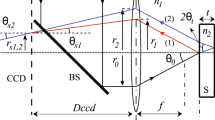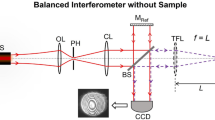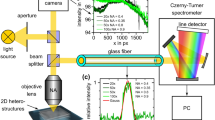Abstract
THE spectrophotometric method of measuring the thickness of thin transparent films on solid surfaces has been used increasingly in recent years1–5. The intensity of a light beam reflected from the film-bearing surface is measured at different wavelengths. A plot of percentage transmission against wavelength takes the form shown in Fig. 1.
This is a preview of subscription content, access via your institution
Access options
Similar content being viewed by others
References
Iler, R. K., J. Colloid Sci., 21, 569 (1966).
Baxter, J. C., Trans. Electrochem. Soc., 112, 388 (1965).
Wilkins, N. J. M., Corrosion Sci., 4, 17 (1964).
Spitzer, W., and Tanenbaum, M., J. App. Phys., 32, 744 (1961).
Charlesby, A., and Polling, J. J., Proc. Roy. Soc., A, 227, 434 (1955).
Wood, R. W., Physical Optics (The Macmillan Co., New York, 1936).
Author information
Authors and Affiliations
Rights and permissions
About this article
Cite this article
HUGHES, R. Extension of the Spectrophotometric Method for Measuring Thin Films on Solid Substrates. Nature 212, 1350–1351 (1966). https://doi.org/10.1038/2121350a0
Received:
Issue Date:
DOI: https://doi.org/10.1038/2121350a0
Comments
By submitting a comment you agree to abide by our Terms and Community Guidelines. If you find something abusive or that does not comply with our terms or guidelines please flag it as inappropriate.



